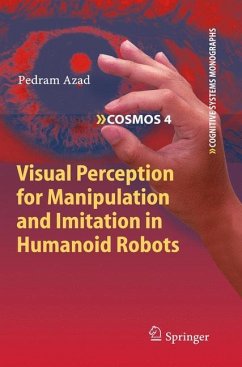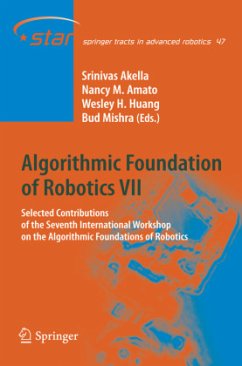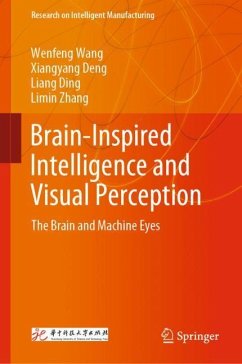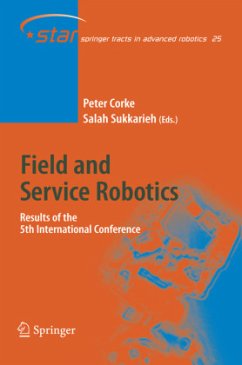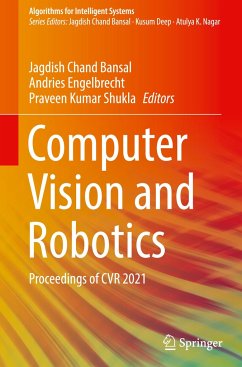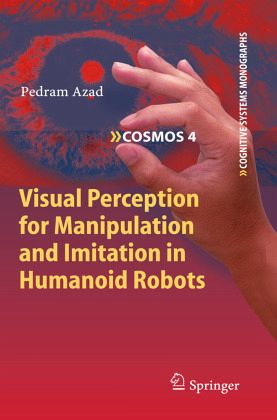
Visual Perception for Manipulation and Imitation in Humanoid Robots
Versandkostenfrei!
Versandfertig in 6-10 Tagen
113,99 €
inkl. MwSt.
Weitere Ausgaben:

PAYBACK Punkte
57 °P sammeln!
In recent yearswe haveseen considerableadvances in the development of - manoid robots, that is robots with an anthropomorphic design. Such robots should be capable of autonomously performing tasks for their human users in changing environments by adapting to these and to the circumstances at hand. To do so, they as well as any kind of autonomous robot need to have some way of understanding the world around them. We humans do so by our senses, both our far senses vision and hearing (smelling too) and our near senses touch and taste. Vision plays a special role in the way it simulta- ously tells...
In recent yearswe haveseen considerableadvances in the development of - manoid robots, that is robots with an anthropomorphic design. Such robots should be capable of autonomously performing tasks for their human users in changing environments by adapting to these and to the circumstances at hand. To do so, they as well as any kind of autonomous robot need to have some way of understanding the world around them. We humans do so by our senses, both our far senses vision and hearing (smelling too) and our near senses touch and taste. Vision plays a special role in the way it simulta- ously tells us where and what in a direct way. It is therefore an accepted factthatto developautonomousrobots,humanoidornot,itisessentialto- clude competent systems for visual perception. Such systems should embody techniques from the ?eld of computer vision, in which sophisticated com- tational methods for extracting information from visual imagery have been developed over a number of decades. However, complete systems incorpor- ing such advanced techniques, while meeting the requirements of real-time processing and adaptivity to the complexity that even our everyday envir- ment displays, are scarce. The present volume takes an important step for ?lling this gap by presenting methods and a system for visual perception for a humanoid robot with speci?c applications to manipulation tasks and to how the robot can learn by imitating the human.





